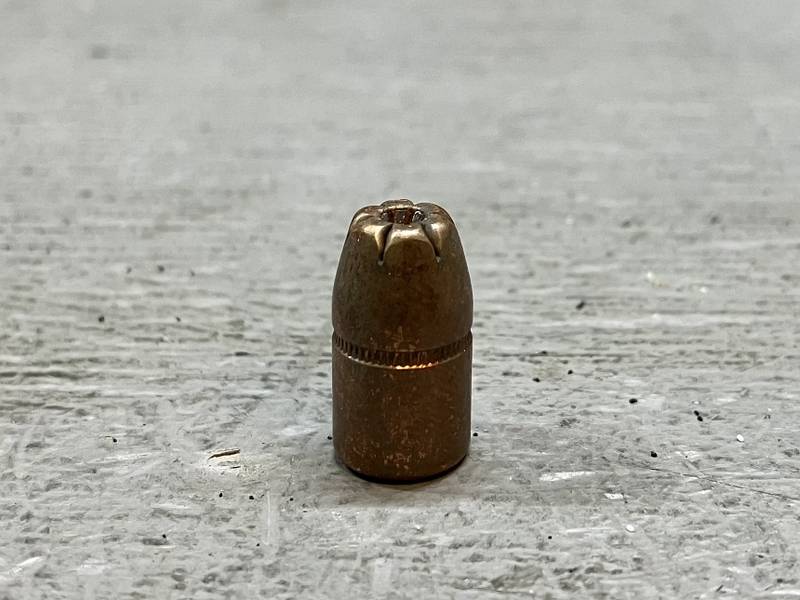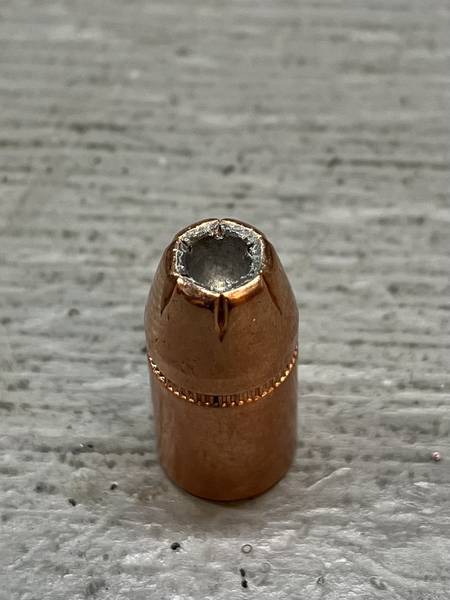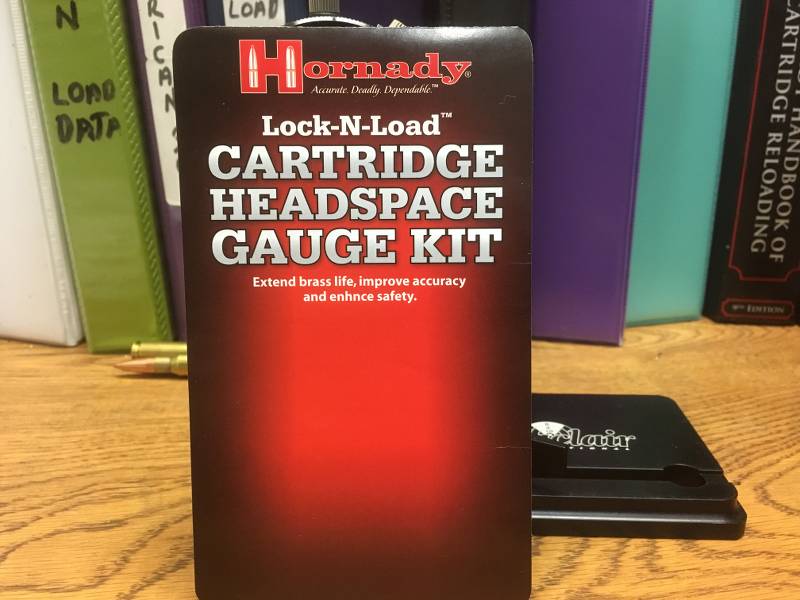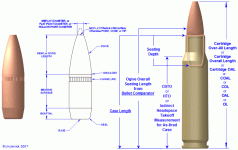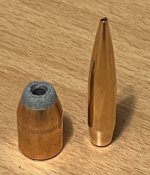So then is a Berger match grade VLD rifle bullet-
If the jacket is completely closed at the tip (no visible opening) then it wouldn't be a "hollow point", but if there is a hole (an opening of any size) where the jacket form the tip, it is a hollow point.
A bullet can be a hollow point, designed for maximum accuracy and not intended to be an expanding bullet (many match bullets are) or it can be a hollow point where the hollow point is intended to be an aid to bullet expansion, such as most handgun bullet hollowpoints.
The issue of match bullets was brought up to the US govt when US sharpshooters began using them against "insurgents". Some people claimed the US was violating the "Geneva Convention" (which we were not, it is actaully Hague Accords that refer to the use of hollow point ammo).
Best I can recall, the US response was that while the "open point" match ammunition were technically hollow points, we were not violating the intent of the accord because they were not expanding bullets, nor were we violating the letter of the accord because the accord is only applicable to the uniformed forces of signatory nations, which, the insurgents were not.
I think it's valid to at least be aware of those differences and what the implications on use are.
Of course. Knowing how the bullet is made and what its intended uses are is always important.
Functional differences in performance don't determine if a bullet is a hollow point, or not. What determines that is if there is a hole (a hollow) in the bullet point or not. I have some 44 ammo loaded with a hollow point, the jacket completely covers the nose except for a small area right in the center where there is an exposed lead spot with a small hole in it. They don't expand at 1200fps but they are "hollow points"
To more directly answer the OP's question, the Hornady 7th edition (2007 but the first book I grabbed with the .38 180 XTP in it has one load table for the XTP and the SIL 180gr bullet. SO, I'd say that data for any .38 cal 180gr bullet with the same amount of bearing surface would be a useful guideline.
Using proper reloading practices reducing starting loads and working up to the published load levels (if possible) in your gun, of course.


